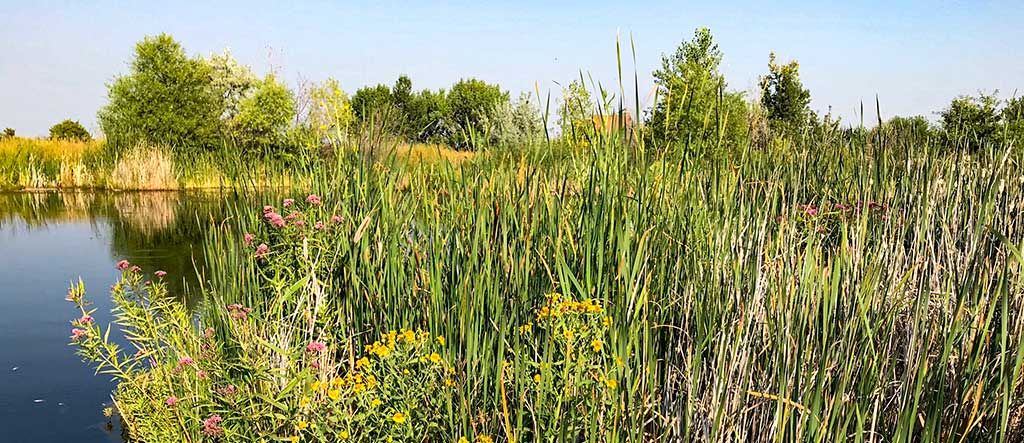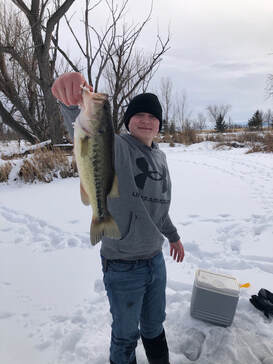Winter thoughts turn to ice-fishing on Fish Fry Lake.
As our planet tilts the northern hemisphere towards winter, I’m reminded of the tenuous balance that allows for life. Residual colors in the leaves of plants and trees mark nature’s random bio-complexity. Mid-October snow flurries just after dawn are a somber reminder that winter is coming. Non-tethered, free-floating BioHavens on Fish Fry Lake stack up on the leeward shore, and in the process create a new waterscape, but one that will change again when the wind blows from another direction. All these are just a few degrees from transition, or even extinction.
Stewardship is a hopeful, optimistic endeavor. We work within the natural system to engender, sustain and promulgate life. Often our focus revolves around the more visible, higher-order biota, and thus we overlook the biofilm-generating building blocks of life. As we learn and pay attention, though, we remember that the biofilm base is beyond vital to all life.
I’ve just completed an article draft for the Society of Wetland Scientists that tracks some of the key things we have learned here at Fish Fry Lake. The lake has undergone many transitions since its early days, when aquatic life was sparse. We have too. I feel a level of pride and accomplishment in that, through thoughtful and inquiring stewardship, and much learning from nature, the lake is a bastion of life now. Our mutual transition has been a creative process. This is energizing as we slip into winter.
I’ve just completed an article draft for the Society of Wetland Scientists that tracks some of the key things we have learned here at Fish Fry Lake. The lake has undergone many transitions since its early days, when aquatic life was sparse. We have too. I feel a level of pride and accomplishment in that, through thoughtful and inquiring stewardship, and much learning from nature, the lake is a bastion of life now. Our mutual transition has been a creative process. This is energizing as we slip into winter.
Ice-Fishing
Bass are not renowned for being caught through ice. They tend to go very dormant in the cold, low-dissolved oxygen conditions of winter. This year (early 2021) was an exception, possibly thanks to the relatively open winter that preceded a few fiercely cold spells that finally caused pond ice to form.
BioHavens and IceBioHavens winterize very well. In our Northern climate, the water freezes in and around the matrix, which is flexible enough to handle any expansion caused by ice.
|
We've seen situations where, during a long winter, islands freeze, the water level receded under the ice and the ice breaks, taking the islands with it. Then it snows, rains, thaw and freezes again, all in a day's work for the matrix. Finally, when Spring thaw arrives, the islands regain their buoyancy and the plants grow again (at least, if you've planted perennials) and become the lush and beautiful islands you remember from last Fall.
NanoHavens and Winter
During winter, fish are very susceptible to both cold temperatures and low oxygen in the water. To stay warm (or should I say, to avoid freezing), they inhabit the bottom layer of the water, when it is stratified. However, this is the zone that typically has the least oxygen and the most sediment. One big advantage of our newly-developed NanoHaven is that it gently adds concentrated oxygen to the bottom layer without stirring up the sediments, so that fish can breathe and survive the toughest time of year. A fish that is healthy going into Spring has a much better chance of successful breeding.

